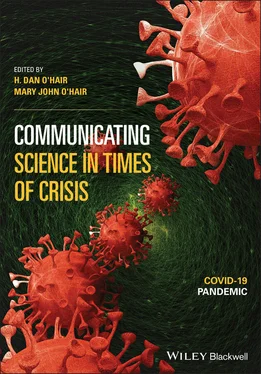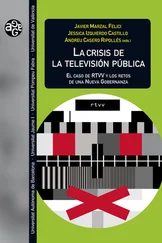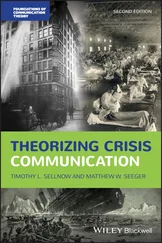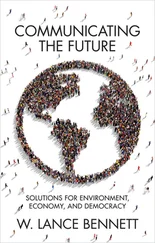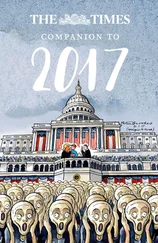163 Rampersad, G., & Althiyabi, T. (2020). Fake news: Acceptance by demographics and culture on social media. Journal of Information Technology & Politics, 17(1), 1–11. https://doi.org/10.1080/19331681.2019.1686676
164 Raspe, L. (2004). The Black Death in Jewish sources. Jewish Quarterly Review, 94(3), 471–489. https://doi.org/10.1353/jqr.2004.0001
165 Reyna, V. F. (2020). A scientific theory of gist communication and misinformation resistance, with implications for health, education, and policy. Proceedings of the National Academy of Sciences of the United States of America. https://doi.org/10.1073/pnas.1912441117
166 Romer, D. & Jamieson, K. H. (2020). Conspiracy theories as barriers to controlling the spread of COVID-19 in the U.S. Social Science & Medicine, 263(113356), 1–8. https://doi.org/10.1016/j.socscimed.2020.113356
167 Rommer, D., Majerova, J., & Machova, V. (2020). Repeated COVID-19 pandemic-related media consumption: Minimizing sharing of nonsensical misinformation through health literacy and critical thinking. Linguistic and Philosophical Investigations, 19, 107–113. https://doi.org/10.22381/LPI1920207
168 Rozenblit, L., & Keil, F. (2002). The misunderstood limits of folk science: An illusion of explanatory depth. Cognitive Science, 26(5), 521–562. https://doi.org/10.1207/s15516709cog2605_1
169 Rubin, V. L. (2019). Disinformation and misinformation triangle: A conceptual model for “fake news” epidemic, causal factors and interventions. Journal of Documentation, 75(5), 1013–1034. https://doi.org/10.1108/JD-12-2018-0209
170 Ryan, C. D., Schaul, A. J., Butner, R., & Swarthout, J. T. (2020). Monetizing disinformation in the attention economy: The case of genetically modified organisms (GMOs). European Management Journal, 38(1), 7–18. https://doi.org/10.1016/j.emj.2019.11.002
171 Salminen, J., Sengün, S., Corporan, J., Jung, S-g., Jansen, B. J. (2020). Topic-driven toxicity: Exploring the relationship between online toxicity and news topics. PLoS ONE 15(2). e0228723. https://doi.org/10.1371/journal.pone.0228723
172 Savelli, M. R. (2016). The virtual marketplace of misinformation. Journal of Technologies in Knowledge Sharing, 12(3/4), 20–27.
173 Schaeffer, K. (2020, April). Nearly three-in-ten Americans believe COVID-19 was made in a lab. Pew Research Center. https://www.pewresearch.org/fact-tank/2020/04/08/nearly-three-in-ten-americans-believe-covid-19-was-made-in-a-lab
174 Schefulele, D. A., & Krause, N. M. (2019). Science audiences, misinformation, and fake news. Proceedings of the National Academy of Sciences of the United States of America, 116(16), 7662–7669. https://doi.org/10.1073/pnas.1805871115
175 Sell, T. K., Hosangadi, D., & Trotochaud, M. (2020). Misinformation and the US Ebola communication crisis: Analyzing the veracity and content of social media messages related to a fear-inducing infectious disease outbreak. BMC Public Health, 20(1), 1–10. https://doi.org/10.1186/s12889-020-08697-3
176 Seymour, B., Getman, R., Saraf, A., Zhang, L. H., & Kalenderian, E. (2015). When advocacy obscures accuracy online: Digital pandemics of public health misinformation through an antifluoride case study. American Journal of Public Health, 105(3), 517–523. https://doi.org/10.2105/AJPH.2014.302437
177 Shaffer, V. A., Focella, E. S., Hathaway, A., Scherer, L. D., & Zikmund-Fisher, B. J. (2018). On the usefulness of narratives: An interdisciplinary review and theoretical model. Annals of Behavioral Medicine, 52(5), 429–442. https://doi.org/10.1093/abm/kax008
178 Shaffer, V. A., & Zikmund-Fisher, B. J. (2013). All stories are not alike: A purpose-, content-, and valence-based taxonomy of patient narratives in decision aids. Medical Decision Making, 33(1), 4–13. https://doi.org/10.1177/0272989X12463266
179 Shahsavari, S., Holur, P., Tangherlini, T. R., & Roychowdhury, V. (2020). Conspiracy in the time of Corona: Automatic detection of COVID-19 conspiracy theories in the media and the news. arXiv:2004.13783v1 [cs.CL] 28 Apr 2020. https://arxiv.org/pdf/2004.13783.pdf
180 Shao, C., Ciampaglia, G. L., Varol, O., Yang, K.-C., Flammini, A., & Menczer, F. (2018). The spread of low-credibility content by social bots. Nature Communications, 9(1), 4787. https://doi.org/10.1038/s41467-018-06930-7
181 Sharma, K., Qian, F., Jiang, H., Ruchansky, N., Zhang, M., & Liu, Y. (2019). Combating fake news: A survey on identification and mitigation techniques. ACM Transactions on Intelligent Systems & Technology, 10(3), 1–42. https://doi.org/10.1145/3305260
182 Sheares, G., Miklencicova, R., & Grupac, M. (2020). The viral power of fake news: Subjective social insecurity, COVID-19 damaging misinformation, and baseless conspiracy theories. Linguistic and Philosophical Investigations, 19, 12–127. https://doi.org/10.22381/LPI1920209
183 Shepherd, D. A., & Suddaby, R. (2017). Theory building: A review and integration. Journal of Management, 43(1), 59–86. https://doi.org/10.1177/0149206316647102
184 Shin, J., Jian, L., Driscoll, K., & Bar, F. (2018, June). The diffusion of misinformation on social media: Temporal pattern, message, and source. Computers in Human Behavior, 83, 278–287. https://doi.org/10.1016/j.chb.2018.02.008
185 Simon, H. A. (1971). Designing organizations for an information-rich world. In M. Greenberger (Ed.), Computers, communications, and the public interest (pp. 37–72). Johns Hopkins Press.
186 Sommariva, S., Vamos, C., Mantzarlis, A., Uyên-Loan Đào, L., & Tyson, D. M. (2018). Spreading the (fake) news: Exploring health messages on social media and the implications for health professionals using a case study. American Journal of Health Education, 49(4), 246–255. https://doi.org/10.1080/19325037.2018.1473178
187 Southwell, B. G., Niederdeppe, J., Cappella, J. N., Gaysynsky, A., Kelley, D. E., Oh, A., Peterson, E. B., & Chou, W.-Y. S. (2019). Misinformation as a misunderstood challenge to public health. American Journal of Preventive Medicine, 57(2), 282–285. https://doi.org/10.1016/j.amepre.2019.03.009
188 Spitzberg, B. H. (2001). The status of attribution theory qua theory in personal relationships. In V. Manusov, & J. H. Harvey (Eds.), Attribution, communication behavior, and close relationships (pp. 353–371). Cambridge University Press.
189 Spitzberg, B. H. (2014). Toward a model of meme diffusion (M3D). Communication Theory, 24(3), 311–339. https://doi.org/10.1111/comt.12042
190 Spitzberg, B. H. (2019). Traces of pace, place and space in personal relationships: The chronogeometrics of studying relationships at scale. Personal Relationships, 26(2), 184–208. https://doi.org/10.1111/pere.12280
191 Spitzberg, B. H. (in press). Theorizing big social media data: A multilevel model of meme diffusion 2.0 (M3D2.0). In M.-H. Tsou & A. Nara (Eds.), Empowering human dynamics research with social media and geospatial data analytics. Springer.
192 Stano, S. (2020). The internet and the spread of conspiracy content. In M. Butter & P. Knight (Eds.), Routledge handbook of conspiracy theories (pp. 483–496). Routledge.
193 Stone, M., Aravopoulou, E., Evans, G., Aldhaen, E., & Parnell, B. D. (2019). From information mismanagement to misinformation—The dark side of information management. Bottom Line: Managing Library Finances, 32(1), 47–70. https://doi.org/10.1108/BL-09-2018-0043
194 Sunstein, C. R., & Vermeule, A. (2009). Conspiracy theories: Causes and cures. Journal of Political Philosophy, 17(2), 202–227. https://doi.org/10.1111/j.1467-9760.2008.00325.x
195 Swami, V., Barron, D., Weis, L., Voracek, M., Stieger, S., & Furnham, A. (2017). An examination of the factorial and convergent validity of four measures of conspiracist ideation, with recommendations for researchers. PLoS ONE, 12(2), 1–27. https://doi.org/10.1371/journal.pone.0172617
Читать дальше
